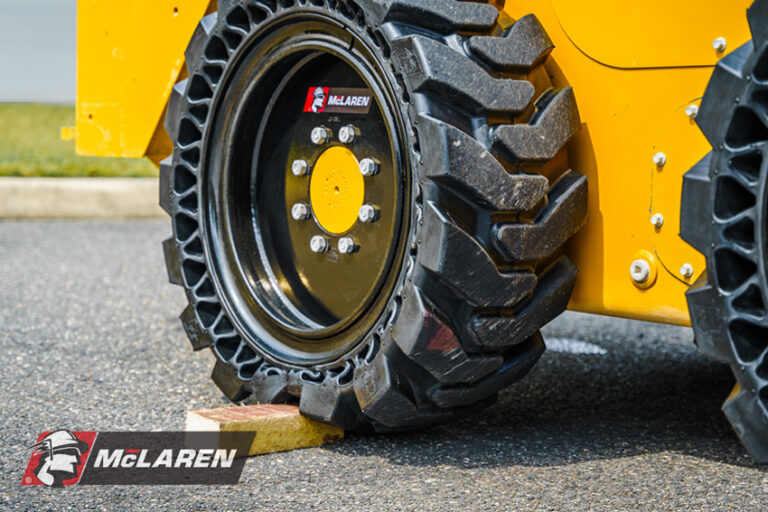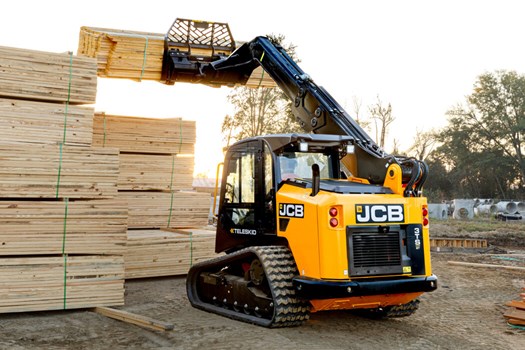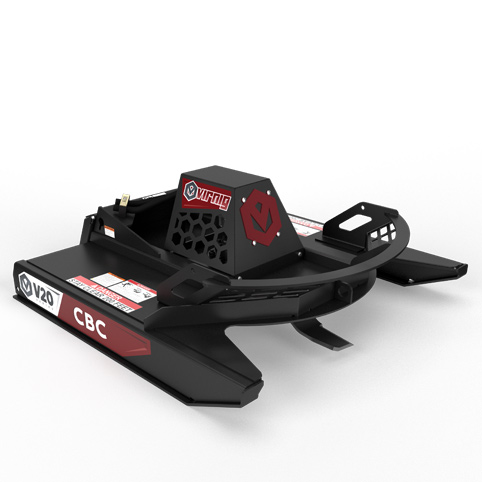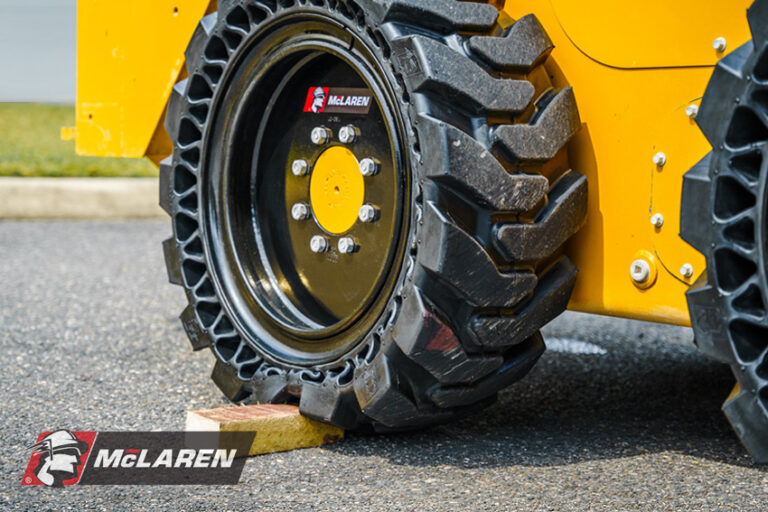How to Choose a Skid Steer? Ultimate Buying Guide
To choose a skid steer, assess your project needs and consider the machine’s size and lifting capacity. Evaluate attachments and features to match specific tasks effectively.
Selecting the right skid steer can significantly impact your project’s efficiency and cost. These versatile machines excel in various applications, from landscaping to construction. Understanding your needs is crucial to making an informed choice. Key factors include weight capacity, engine power, and the types of attachments available.
Different models cater to specific tasks, whether you require a compact machine for tight spaces or a larger one for heavy lifting. Consider terrain, job frequency, and maintenance requirements to ensure longevity and performance. A well-chosen skid steer can boost productivity and simplify complex tasks on the job site.
Introduction To Skid Steers
Skid steers are versatile machines used in various industries. Their compact size and powerful capabilities make them essential for many tasks. Understanding their history and common uses can help in choosing the right skid steer.
Brief History
Skid steers have a rich history dating back to the 1950s. Here are some key points:
- The first skid steer was invented in 1957.
- Originally designed for poultry farmers.
- Quickly gained popularity in construction and landscaping.
- Modern designs include advanced technology and attachments.
Common Uses
Skid steers are used across various industries. Their adaptability makes them valuable in many situations. Here are some common applications:
- Construction: Moving materials and digging.
- Landscaping: Grading and leveling soil.
- Agriculture: Tilling and hauling feed.
- Demolition: Removing debris and structures.
- Snow Removal: Clearing driveways and parking lots.
These machines can save time and labor in projects. Choosing the right skid steer helps increase efficiency.
Evaluating Your Needs
Choosing the right skid steer involves careful evaluation of your needs. Understanding project size and operational requirements is crucial. This guide helps simplify your decision-making process.
Project Size And Scope
Identify the size of your projects. Consider the following:
- Residential tasks
- Commercial jobs
- Landscaping
- Construction work
Different projects require different skid steer capabilities. Here’s a quick reference table:
| Project Type | Recommended Skid Steer Size |
|---|---|
| Small Residential | Compact (up to 50 HP) |
| Medium Landscaping | Mid-size (50-80 HP) |
| Large Construction | Full-size (80+ HP) |
Operational Requirements
Determine your operational needs. Consider these factors:
- Terrain type: flat, hilly, or uneven
- Attachment requirements: buckets, forks, or grapples
- Frequency of use: occasional or daily
- Transportability: trailer size and vehicle capacity
Every task has unique needs. Choose a skid steer that meets your specific operational requirements. This ensures efficiency and productivity on the job.
Size And Specifications
Choosing the right skid steer requires careful attention to size and specifications. These factors determine the machine’s performance and suitability for your tasks. Understanding the differences between models ensures you make an informed choice.
Compact Vs. Full-size Models
Skid steers come in two main sizes: compact and full-size. Each has unique advantages.
- Compact Models:
- Ideal for tight spaces.
- Lightweight and easy to maneuver.
- Lower lift capacity.
- Full-Size Models:
- Higher lift capacity and reach.
- Suitable for larger jobs.
- More stability on uneven ground.
Lift Capacity And Height
Lift capacity and height are critical specifications. They affect how much weight the skid steer can handle.
| Model Type | Lift Capacity (lbs) | Lift Height (ft) |
|---|---|---|
| Compact | 1,500 – 2,500 | 8 – 10 |
| Full-Size | 2,500 – 4,500 | 10 – 12 |
Choose a model that matches your lifting needs. Higher lift capacity allows for heavier loads. Consider the lift height for your projects.
Engine And Performance
Choosing the right skid steer involves understanding its engine and performance. The engine affects power, speed, and efficiency. Knowing these factors helps in making an informed decision.
Engine Power
Engine power is crucial for effective operation. It determines how much work the skid steer can handle. Here are some key points to consider:
- Horsepower: Higher horsepower means better performance.
- Torque: This affects the skid steer’s lifting capacity.
- Type of Engine: Diesel engines often provide more power than gas engines.
Consider a table for better understanding:
| Engine Type | Horsepower | Torque (lb-ft) |
|---|---|---|
| Gas | 50-75 | 100-200 |
| Diesel | 60-100 | 200-300 |
Fuel Efficiency
Fuel efficiency impacts long-term costs. A skid steer that uses less fuel saves money. Consider these factors:
- Engine Size: Smaller engines may consume less fuel.
- Load Capacity: Efficient machines handle more load with less fuel.
- Technology: Look for models with advanced fuel systems.
Review the fuel efficiency ratings:
| Model | Fuel Consumption (gallons/hour) | Efficiency Rating (mpg) |
|---|---|---|
| Model A | 2.5 | 15 |
| Model B | 3.0 | 12 |
Attachment Versatility
Choosing the right skid steer goes beyond its power and size. It’s crucial to consider the attachment versatility. The right attachments can transform a skid steer into a multi-functional tool. This feature increases efficiency and productivity on the job site.
Types Of Attachments
Skid steers can use various attachments. Here are some popular types:
- Bucket: Ideal for digging and moving materials.
- Forks: Perfect for lifting and transporting pallets.
- Grapple: Useful for handling irregular materials.
- Auger: Great for drilling holes in the ground.
- Snow Plow: Efficient for clearing snow.
Each attachment serves different purposes. Selecting versatile attachments enhances your skid steer’s capabilities.
Quick-attach Systems
Quick-attach systems simplify the process of changing attachments. They allow operators to switch tools without special tools or equipment. This feature saves time and increases productivity.
| System Type | Advantages | Considerations |
|---|---|---|
| Manual Quick-Attach | Cost-effective and reliable. | Requires some physical effort. |
| Hydraulic Quick-Attach | Allows easy attachment changes. | More expensive and complex. |
Evaluate your needs before choosing a quick-attach system. The right system can enhance your work efficiency significantly.
Operating Comfort
Choosing a skid steer involves many factors. One crucial aspect is operating comfort. A comfortable operator can work longer and more efficiently. Cabin features and control ergonomics play significant roles in comfort.
Cabin Features
Pay attention to cabin features. A well-designed cabin enhances comfort during long hours. Here are essential cabin features to consider:
- Space: Ample room for movement.
- Visibility: Large windows for better sightlines.
- Heating and Cooling: Climate control systems for all weather.
- Seat: Adjustable seats for personalized comfort.
- Noise Insulation: Reduced noise levels for a quieter ride.
Consider these features to ensure a pleasant working environment.
Controls And Ergonomics
Good controls and ergonomics are vital for comfort. Operators need easy access to controls. Here are key points to evaluate:
| Control Type | Description |
|---|---|
| Joystick Controls | Intuitive movements for precise operation. |
| Foot Pedals | Allow for hands-free operation. |
| Control Layout | Logical arrangement for easy access. |
| Comfort Grip | Reduces hand fatigue during use. |
Check controls for ease of use and comfort. A well-designed control system reduces operator strain.
Brand And Dealer Considerations
Choosing the right skid steer involves understanding the brand and dealer. A strong brand ensures quality and reliability. A good dealer provides support and service. Both factors influence your purchase decision.
Brand Reputation
Brand reputation plays a crucial role in your choice. Consider the following points:
- Quality: Reliable brands produce durable machines.
- Performance: Brands known for strong performance meet job demands.
- Customer reviews: Read reviews to gauge user satisfaction.
- Longevity: Established brands have a proven track record.
Research popular brands. Here’s a table of well-known skid steer brands:
| Brand | Reputation | Key Features |
|---|---|---|
| Bobcat | Highly trusted | Versatile, strong lift capacity |
| Cat | Industry leader | Powerful engines, great fuel efficiency |
| Case | Reliable | Comfortable operator station, easy maintenance |
| John Deere | Innovative | Advanced technology, smooth operation |
Dealer Support And Warranty
Dealer support is vital for a smooth experience. Check these aspects:
- Service availability: Ensure the dealer offers timely service.
- Parts availability: Quick access to parts reduces downtime.
- Warranty: A strong warranty protects your investment.
- Training: Some dealers provide operator training for free.
Ask potential dealers about their warranty terms. Here’s what to look for:
| Warranty Type | Typical Duration | Coverage |
|---|---|---|
| Limited Warranty | 1-3 years | Parts and labor for defects |
| Extended Warranty | 3-5 years | Comprehensive coverage for repairs |
Choosing the right brand and dealer ensures a successful skid steer purchase.

Credit: www.bestline.com
Maintenance And Durability
Choosing a skid steer involves considering its maintenance and durability. A reliable machine saves time and money. Regular upkeep keeps it running efficiently. Durability ensures it withstands tough jobs.
Serviceability
Check how easy it is to service the skid steer. Machines with simple access to parts are better. Look for:
- Easy-to-reach filters
- Accessible engine components
- Clear service intervals
Good serviceability reduces downtime. It helps mechanics perform repairs quickly. A well-designed machine means fewer headaches.
Build Quality And Reliability
Assess the build quality of the skid steer. Quality materials lead to a longer lifespan. Reliable machines handle heavy workloads without issues. Consider the following factors:
| Feature | Importance |
|---|---|
| Frame Material | Durable frames resist bending and breaking. |
| Weld Quality | Strong welds prevent structural failures. |
| Hydraulic System | Reliable hydraulics ensure smooth operation. |
Choose machines with positive reviews. Reliable brands have proven performance. Investing in quality pays off in the long run.
Budget And Financing
Choosing the right skid steer requires careful consideration of your budget. Understanding costs helps you make an informed choice. Financing options can ease the financial burden. Let’s explore new versus used options and financing solutions.
New Vs. Used Options
Buying a skid steer can vary greatly in cost. Here are some key points:
- New Skid Steers:
- Higher initial cost.
- Latest technology and features.
- Full warranty for peace of mind.
- Used Skid Steers:
- Lower purchase price.
- Potential hidden issues.
- May lack warranty coverage.
Financing Solutions
Financing helps manage the cost of a skid steer. Consider these options:
| Financing Option | Description | Pros | Cons |
|---|---|---|---|
| Bank Loans | Traditional loans from banks. |
|
|
| Dealer Financing | Financing offered by the dealer. |
|
|
| Leasing | Renting the skid steer for a set time. |
|
|
Explore these financing options. Choose what best fits your budget. Assess the total cost before making a final decision.

Credit: thompsontractor.com
Safety Features
Safety features are crucial when choosing a skid steer. They protect the operator and others on the job site. Understanding these features ensures a safer working environment.
Operator Safety
Operator safety is the top priority for any skid steer. Essential safety features include:
- Rollover Protective Structures (ROPS): Prevents injuries during rollovers.
- Falling Object Protective Structures (FOPS): Shields the operator from falling debris.
- Safety Belts: Secures the operator in their seat during operation.
- Operator Presence Control: Stops the machine when the operator leaves the seat.
- Visibility Enhancements: Mirrors and lights improve surroundings visibility.
Always check that these features meet local safety standards. A well-designed skid steer promotes better operator safety.
On-site Safety Protocols
Implementing on-site safety protocols is vital. Follow these guidelines for a safer work environment:
- Conduct regular safety training for all operators.
- Inspect the skid steer before each use.
- Establish clear communication signals among team members.
- Maintain a clean and organized work area.
- Use proper personal protective equipment (PPE).
Creating a culture of safety ensures everyone goes home unharmed. Regularly review and update safety protocols as needed.
Making The Purchase
Choosing the right skid steer is crucial for your needs. A thoughtful purchase can save you time and money. Follow these steps to ensure a wise investment.
Inspection Checklist
Before making a purchase, perform a thorough inspection. Here’s a checklist to guide you:
- Engine condition: Look for leaks and listen for unusual sounds.
- Hydraulics: Check for smooth operation and leaks.
- Tracks and tires: Inspect for wear and proper inflation.
- Controls: Ensure all controls function smoothly.
- Cab condition: Check for comfort and visibility.
- Service records: Review maintenance history.
Test Drive And Final Assessment
A test drive is essential before purchasing. Here’s what to do:
- Start the engine: Observe how easily it starts.
- Check performance: Operate the skid steer at different speeds.
- Test hydraulic functions: Use attachments to assess responsiveness.
- Evaluate stability: Drive on uneven ground to check balance.
- Listen for noises: Be alert for any strange sounds during operation.
After the test drive, conduct a final assessment:
| Aspect | Rating (1-5) |
|---|---|
| Engine Performance | |
| Hydraulic Response | |
| Comfort Level | |
| Overall Condition |
Assess the ratings to help make your final decision. A skid steer should meet your needs effectively.

Credit: www.youtube.com
Frequently Asked Questions
What Should I Consider When Choosing A Skid Steer?
When selecting a skid steer, consider the machine’s size, lifting capacity, and engine power. Assess the job requirements and your operating environment. Additionally, look for attachments that enhance versatility. Prioritize comfort and visibility for the operator, as these factors significantly impact productivity and safety.
How Do I Determine The Right Skid Steer Size?
To determine the right skid steer size, evaluate the weight of materials you’ll lift and move. Consider the size of your worksite and any access restrictions. A compact model may work for tight spaces, while larger jobs may require a bigger machine.
Always align the skid steer with your project needs.
What Attachments Are Essential For Skid Steers?
Essential skid steer attachments include buckets, forks, and grapples. These tools enhance functionality for various tasks. Depending on your projects, consider specialized attachments like snow plows or augers. Choosing the right attachments increases efficiency and expands the machine’s capabilities for different jobs.
Are Used Skid Steers A Good Option?
Used skid steers can be a cost-effective choice. They often provide significant savings compared to new models. However, inspect for wear and tear, and check maintenance records. Ensure the machine meets your requirements and has a reliable history to avoid unexpected repairs.
Conclusion
Choosing the right skid steer is crucial for efficiency and productivity. Consider your specific needs, budget, and available attachments. Research various models and test them if possible. A well-informed decision will lead to better performance on the job site. Invest wisely, and your skid steer will serve you well for years.






